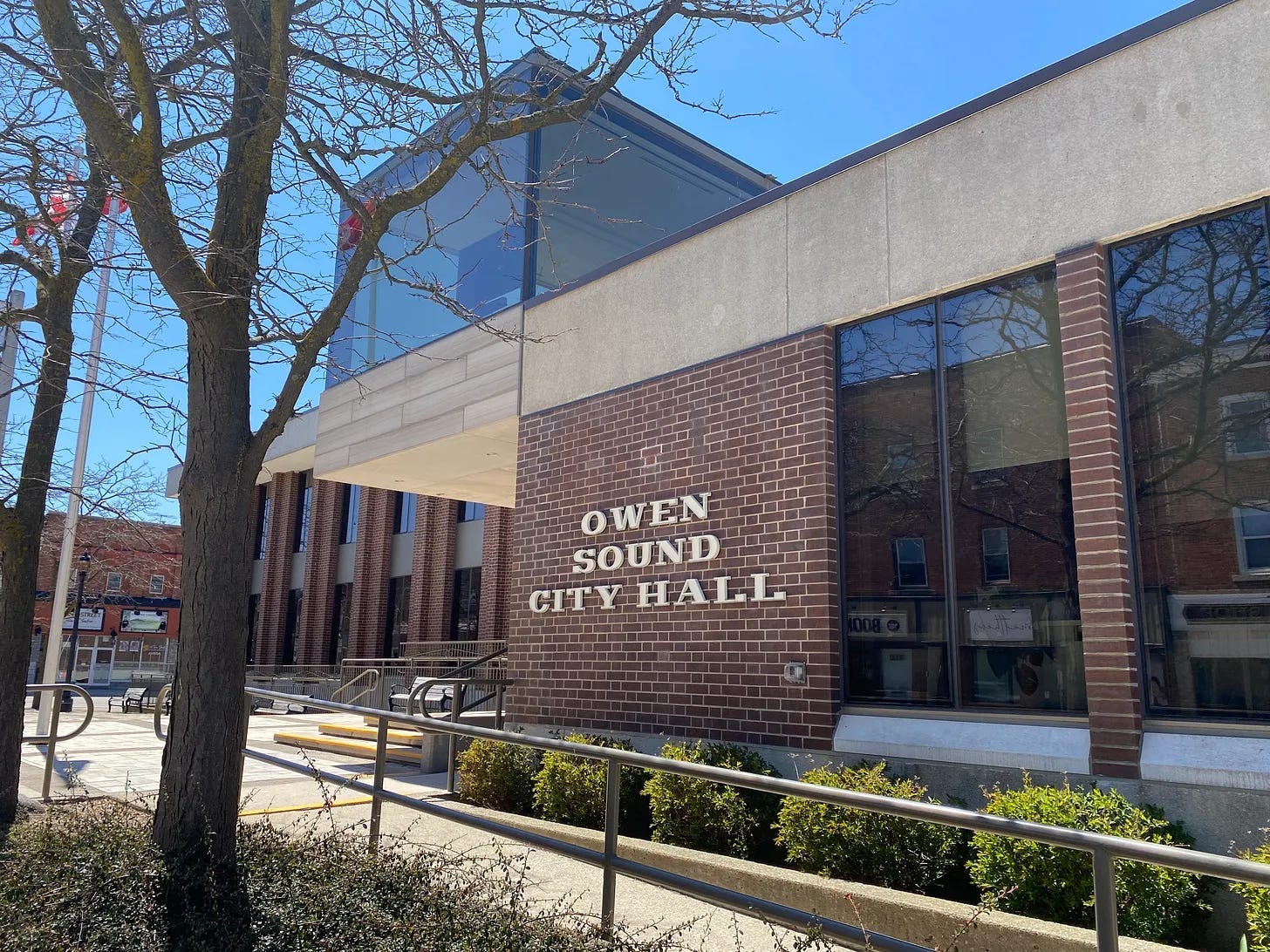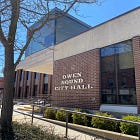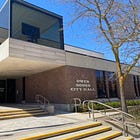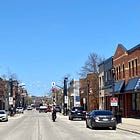Owen Sound Council Reviews Outcomes of July 28 Downtown Safety Meeting
Owen Sound’s July 28 safety meeting drew 100+ voices, 60 ideas, and two paths forward: City Hall’s internal plan or sustained public dialogue.
City Manager Tim Simmonds says Owen Sound’s July 28 downtown safety meeting achieved what it set out to do: bring a wide cross-section of River District stakeholders into the same room for a candid conversation.
In a report to Council this week, Simmonds described the session at the Harmony Centre as a constructive step toward rebuilding trust and collaboration. He noted that 103 participants attended, from business owners and property managers to social service providers, police representatives, and municipal officials.
The meeting, he said, was marked by “open dialogue and strengthened relationships.” More than 60 ideas were generated, and staff have since seen a shift in the tone of communications from stakeholders, with many calling for continued engagement and concrete action, he reported.
Simmonds presented the meeting as evidence that the City’s approach is working and as justification for a more centralized, internal management framework.
What the Facilitator Heard
At the same time, a detailed facilitator’s report captured how the July 28 meeting unfolded and what participants brought forward.
Prepared by Joel Pennington, it outlines a structured evening that moved from ground rules on respectful dialogue to small-group brainstorming and a final round of shared reflections.
Pennington portrayed the meeting as evidence that the community expects more visible leadership, openness, and accountability from the City — and warned that credibility depends on sustained, inclusive engagement.
The tone, Pennington noted, was constructive despite the tensions that often shape public conversations about downtown safety. While the suggestions for how stakeholders could work together to address challenges and build a stronger River District ranged widely, some common themes stood out:
a need for better communication between sectors
visible “small wins” like public washrooms and cleaner streets
and a recognition that long-term progress will require shared leadership and sustained collaboration.
Pennington’s report also emphasizes that citizens expect the City to lead. Recommendations included:
institutionalizing regular downtown stakeholder meetings
developing a public action tracker to monitor progress
and supporting less formal relationship-building opportunities such as drop-in dialogues, neighbourhood walkabouts, and business-service networking events.
The facilitator further suggested that the River District Board expand its representation to include voices from the social service sector, and that City staff integrate action items from the meeting into their work plans.
Resident Voices and Staff Capacity on the Table
In response to the presentation, Councilor Jon Farmer asked the City Manager how staff intend to engage River District residents. Simmonds said he hopes that landlords will bring forward tenant concerns, and that residents have many other ways to engage the City through committee meetings, the City website, and their upcoming Open House.
Farmer also noted that when ideas have come up mid-year, council has heard before that staff “are at work capacity” and that if anything is going to be added to their work plans or changed, something else must be removed.
“It seems like this report is generating a number of suggestions and ideas that are being incorporated immediately, and I’m curious — with that previous context — what if anything is staff removing from workplans? Is this reprioritizing or deprioritizing to make what seems like a number of action items possible?” Farmer asked.
Simmonds agreed that “there’s not much slack in the system,” and reiterated a position he’s taken numerous times in recent years: city administrative staff are operating at such a capacity that projects must be planned out on an annual basis.
Upon reviewing the 60+ ideas submitted at the meeting, Simmonds said he found that staff are already undertaking “a lot” of them through their daily and service work. He promised a “series of reports,” the first of which will lay out a project management framework for implementing the recommendations they decide to move forward.
“My hope is with the project management system in place, that we won’t be requesting additional resources but will be identifying what needs to happen, then have one person in place effectively organizing and making sure the various departments — their annual work plans, their budgets — are put together and addressing those needs,” Simmonds explained.
He promised the City will tackle as much as they can through a “work surge” this winter.
Councilor Carol Merton suggested the City needed to make an effort to connect more directly with the people who live and work downtown. Though they may interact with landlords, social services agencies, and businesses, their “lived experiences” are not necessaily reflected in engagement with those stakeholders, she noted.
City Has Heard Residents’ River District Concerns
Owen Sound residents were given an opportunity to share their perspectives through the Vision 2050 survey, a public consultation process with $85,000 allocated for its design and delivery.
While the City released a polished two-page summary of the responses to five open-ended questions, the full texts — including those about poverty, race relations, homophobia, and homelessness — were never made public.
We obtained those written submissions through a Freedom of Information request and published them in full earlier this year. They provide an unvarnished look at the challenges residents see in their city, from boarded-up storefronts to the exodus of young talent, and from a visible drug crisis to deep frustration with local leadership.
When asked to name “one characteristic of Owen Sound that is uncomfortable to speak about or is a significant opportunity for improvement,” many respondents pointed to the River District:
“The downtown revamp of the River District that has been unsuccessful in making downtown a place folks want to spend time and money, the mistreatment and oppression of the homeless and folks struggling with addiction.”
“Homelessness is a solvable problem. There is no excuse for people having to live in tents in the woods or sleeping in doorways.”
“Poverty, drug abuse downtown, slum lord apartments downtown, boarded up storefronts, municipal barriers facing entrepreneurs who are trying to succeed.”
“The most significant opportunity for improvement is in the downtown. How private landlords in the downtown are allowed to operate (forcing retailers to close on Sundays, leaving buildings derelict and boarded up) needs to be revisited and talked about collaboratively with business owners and residents. Zoning and the lack of enforcement of bylaws has to improve.”
“Our downtown feels empty and unsafe and that breeds contempt because we blame the lost souls who have nowhere to go and no one to care.”
Residents’ Ideas for a Prosperous, Connected, Vibrant and Safe Owen Sound
Alongside criticism and concern, many Vision 2050 respondents offered ideas for what a thriving Owen Sound could look like. Their suggestions blended practical steps with big-picture visions:
“Owen Sound would have a walkable, vibrant downtown where people felt safe both day and night. The arts (visual, musical, etc.) would be valued and supported. Green spaces would be designed for the wildlife (pollinators, etc.) as well as for people.”
“Make OS a destination for IT, Telecom or an automotive plant. Jobs that pay well and will attract professionals.”
“More organized clean ups. Lay off the flower watering and have a min of a daily needle clean up at all children places, parks, schools, shops etc.
“Look after garbage collection in the downtown area & parks more frequently, address homelessness with a shelter, have police officers & cruisers more visible around the city.”
“A community where city leadership models concern for its citizens, encourages the public to advocate for its most vulnerable members, and invests in preventative programs (affordable housing and childcare, accessibility services, support programs for at-risk mothers, mental health services, trauma-informed providers, etc.) to ensure equity for all.”
“Utilize unique downtown to create spaces people want to spend time in; in turn, they will shop. People don’t necessarily go to any downtown to shop, they go to be around others and feel community — once there, they shop.”
“24/7 homeless shelter. Get the homeless out of downtown and River District. They need a place to go at night. Better for all.”
“Develop, follow and fund a fully functioning Investment Attraction Strategy to take the City forward over the next 5–10 years. Attract a cross section of well-paying jobs… Get houses built that workers can afford and develop neighborhoods with parks and lots of trees.”
“It starts with the youth of our community, by providing a safe environment, geared to young adult activities and entertainment, as well as jobs that provide an income that will give them enough to buy a home and enjoy the amenities of Owen Sound.”
Two Perspectives, One Challenge
Simmonds framed the July 28 meeting as proof that the City’s current approach is working: relationships were strengthened, many of the ideas raised align with work already underway, and a new internal framework will help staff stay organized.
Pennington, in contrast, emphasized that the City’s credibility depends on sustained, inclusive engagement. His recommendations called for institutionalizing regular stakeholder meetings, creating a public action tracker, and expanding River District decision-making to include voices from social services and marginalized communities.
As staff prepare their October 6 follow-up report, the question is whether the City will lean more heavily on its internal project management system or on the ongoing, outward-facing dialogue that both participants and the facilitator have identified as essential.
For more information, see:
Related:






